





181 Street is a deep level bored tunnel subway station in Washington Heights that opened on May 30, 1906. It is one of just 3 stations in the entire subway system where the platforms can only be reached by elevators (168th Street, its sister cavern arch station and Clark Street in Brooklyn are the other two). The other 3 elevator stations in Washington Heights have alternative exits via tunnels. The station originally opened with just two elevators from the southern end of the uptown platform, that stopped at an intermediate landing for the downtown platform (where the current locked up second pedestrian bridge is) before continuing up to an upper landing just below street level, where the current streetstair at the SE corner of 181 Street and St. Nicholas Avenue is. These two elevators were overcrowded from the start as the new subway line turned Washington Heights into a bustling shopping district and connection point to new east-west streetcar lines (now all buses, there are still 5 connecting Bronx Bus routes) over the Washington Bridge to many destinations in the Bronx.
To solve these capacity issues 4 additional elevators were then installed towards what was then the northern end of the arched cavern platform and opened in 1910 through 1912, these elevators originally had 3 elevator landings, including on the Uptown platform, one for the overpass bridge to the Downtown platform (with stairs to the downtown platform) and up to near the current mezzanine. This led to the station having a whopping 6 elevators until 1981 when the southern 2 original elevators were closed, the lower landing from the Uptown platform was also closed at some point around this time as well.
In 1999 the station closed for about 4 months for the reconstruction and replacement of all 4 elevators, minimal other work was done on the station, except for the installation a modern marble floor and tactile warning strips along the platforms. They did not fix the structural integrity of the historic features of the station itself.
On August 16th, 2009 the over a hundred year old station really started to show its age. A 25 foot section of bricks lining the roof collapsed onto the tracks and platforms. No one was injured but 1 train service was suspended immediately between 168th Street and Dyckman Street. Trains ran in two sections with a bus bridge in-between. This lasted a week until August 24 when continuous train service started again between South Ferry and 242 Street, skipping 181 Street, the station finally reopened a week later on August 31, 2009. For 7 years, until Summer 2016 because of the ceiling collapse passengers had had to endure a station with protective scaffolding covering over the two station tracks and closing off half the width of the platforms. This made them extremely narrow and dangerous. Along the platforms, instead of the nice brick walls and high mosaic name tablets is plywood (bottom portion) and mesh walls, replaced with chain link fencing towards the end of reconstruction (upper portion) to keep more unstable bricks from possibly hitting straphangers. Construction to restore the now structurally unsound arch didn't begin for 3 years until 2012 as the reconstruction project was designed and $30 million in funding was found. This full historical reconstruction replaced all of the ceiling tiles, made the station much brighter, with new additional lighting shining onto the top of the vaulted ceiling, and restored the terra-cotta base plates that were once for chandeliers.
The station has two side platforms for the two-track line. The original six cars when the station opened are located under the high arched vaulted ceiling. This brick ceiling has a trimline of decorative green and flour looking horizontal shapes about six feet above the platform. The lower portion of the cavern walls are a darker redbrick compared to the light brown that is the rest of the station. Name tablets with similar simple patterns are high above the platforms, angled towards the top of the vaulted ceiling. These name tablets say 181st Street and have been modified slightly since the station opened with the opening of George Washington Bridge which is now in mosaic beneath the name tablets. Additional grey signs that say Yeshiva University hang nearby. After cavern reconstruction in Fall 2016 a sign that should have been installed at 168 Street that said the stop was for New York-Presbyterian Hospital was visible along the platform at 181 Street. Along the top of the arch are ornate designs that once housed chandeliers for lighting.
The northern half of the station is where the platforms were extended. After the ceiling collapse, no scaffolding was in this area because the platforms are younger (dating to 1948) and not in a large wide cavern. They become considerably less ornate with the newer platforms clearly carved directly out of sides of the deep-bore tunnel. This portion of the platforms have low ceilings with very wide white tiled columns that include the same trimline as the historic portion of the station. There are no beams between the tracks since the deep tunnel was designed to not need them. The columns all have 181 lettering on tiles just beneath the trimline. The walls here have the same trimline as the vaulted ceiling portion of the station and similar name tablets although the low ceilings require much lower name tablets that are directly inside the trimline.
To leave the station there is one open bridge directly inside the vaulted ceiling at the very center of the platforms (and at the northern end of the historic vaulted portion). There are the closed since 1981 remains of a previous bridge in the middle of the vaulted ceiling portion of the platform (this was the original exit). This bridge has two staircases down to each platform and an additional few steps at each end meaning passengers going to the downtown platform have to go up a few steps and come back down. This leads a very short way to a narrow elevator landing. The lack of space means that after any train there is usually a jam up and crowd of people waiting for the elevators. This crowd often can spill up onto the overpass bridge or the staircases down to the platforms. This in turn causes problems because passengers going down the elevators wanting to reach the trains must push through crowds waiting for the elevators. Once the elevators are reached there are luckily four of them (the station's problem is narrow landings, not needing more elevators). These four elevators always have one staffed at all times (like the IND stations, the staff are former station cleaners that have disabilities and can't perform their normal jobs) but are noticeably more narrow than the A train IND Station elevators.
The elevators lead up an only slightly less cramped level in a mezzanine beneath the street. From here passengers must navigate to one narrow central corridor between the middle two elevators that leads back to the turnstiles. It arrives at a quite active shopping arcade that includes a clothing store and the entrance to a bingo parlor. It has been there since the 1970s and was a bowling alley before that beyond the token booth. To reach the street, there is a staircase up directly in the storefronts along the east side of Saint Nicholas Avenue between 181st and 182nd Streets. Another short tunnel leads up to a conventional street stair at the SE corner of 181 Street and Saint Nicholas Avenue, this was an ornate kiosk and separate entrance (to the original 2 elevators) until 1960 when it was connected to the currently in use entrance and elevator landing via the current tunnel where the remains of the original elevator landing are behind locked doors and subway tile.
The station was closed again from December 5, 2020, to November 30, 2021 for elevator repair, this project reopened the former and long closed landing along the Uptown platform, allowing elevator access directly from the Uptown platform again. The elevator still make an intermediate stop at the lower mezzanine level for primary access to the Downtown platforms and Uptown platforms via stairs. Only 4 elevators were repaired during this closure, the previous original two elevators are not planned to be rebuilt giving the station 4 elevators for the foreseeable future.
Photos 1: April 13, 2003; 2: October 9, 2003; 13: June 20, 2003; 4 & 5: December 21, 2003; 6: March 27, 2004; 7: February 6, 2005; November 16, 2003; 2: October 14, 2005; 3-8: June 26, 2008; 9: April 9, 2005; 10 & 11: October 14, 2005; 12-15: November 21, 2004; 16 & 17: March 17, 2006; 18: June 10, 2007; 19-20: December 27, 2008; 21-25: December 27, 2010; 26-32: June 3, 2011; 33-39: June 9, 2011; 40 & 41: November 2, 2012; 42-44: November 21, 2012; 46-50: March 2, 2013; 51: July 25, 2015; 52 & 53: May 28, 2016; 54-66: September 25, 2016; 67-85: October 6, 2018; 86 & 87: May 28, 2016;
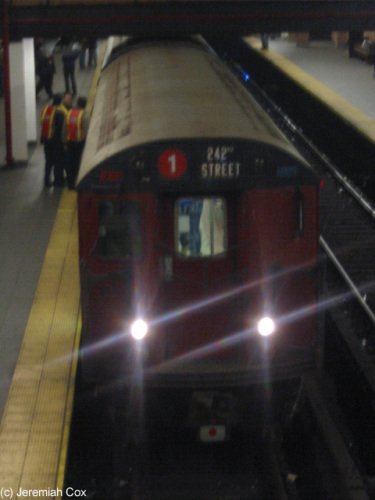
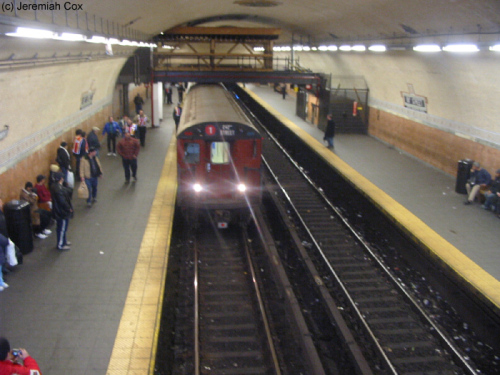
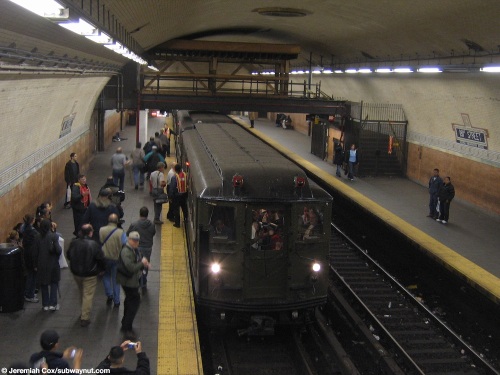
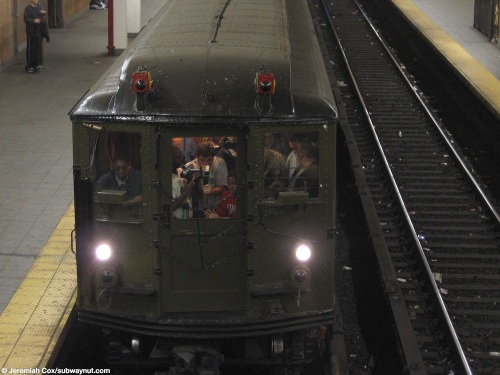
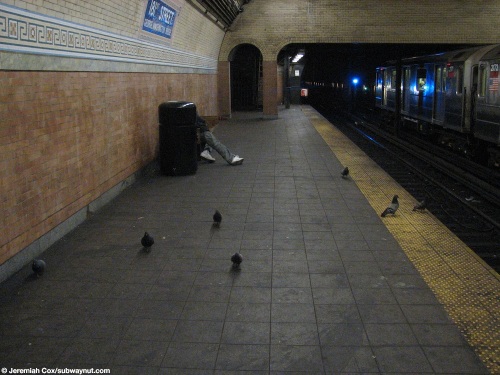
Station Subway Lines (1989-2005)

